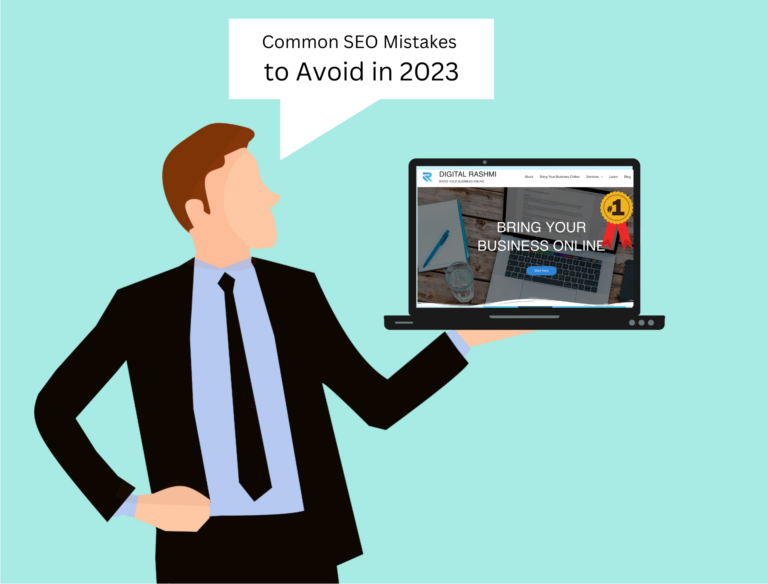
Search Engine Optimization (SEO) is a critical component of any online marketing strategy. It involves optimizing your website to rank higher in search engine results pages (SERPs) for specific keywords and phrases that your target audience uses. By improving your website’s visibility in search engines, you can attract more traffic, generate more leads, and increase your revenue.
However, SEO is not always straightforward, and there are common mistakes that website owners and marketers make that can hurt their efforts. In this blog, we will discuss some of the common SEO mistakes to avoid in 2023.
1. Ignoring Mobile Optimization:
With more than half of all internet traffic coming from mobile devices, it’s crucial to ensure that your website is optimized for mobile users. If your website is not mobile-friendly, you risk losing a significant portion of your audience and hurting your SEO efforts. Google has also stated that mobile-friendliness is a ranking factor, so it’s essential to prioritize this aspect of your website’s optimization.
2. Keyword Stuffing:
Keyword stuffing is the practice of excessively using keywords in your website’s content, meta tags, and URLs to try and manipulate search engine rankings. This approach not only looks unnatural to readers but can also harm your website’s ranking in search results. Google’s algorithm has evolved significantly to detect keyword stuffing, and the penalties for this practice can be severe. Instead, focus on creating high-quality content that provides value to your audience and incorporates relevant keywords naturally.
3. Neglecting Local SEO:
Local SEO is crucial for businesses with a physical presence, such as brick-and-mortar stores or service providers. Neglecting local SEO can result in your business not appearing in local search results, missing out on potential customers. Ensure that your website has accurate and consistent information about your business’s location, opening hours, and contact details. Also, prioritize building local citations, such as local business directories, to boost your local SEO efforts.
4. Ignoring User Experience (UX):
Google prioritizes user experience, so if your website does not provide a positive UX, it can hurt your SEO efforts. Factors that can impact UX include website speed, navigation, design, and content quality. Ensure that your website is fast, easy to navigate, visually appealing, and provides high-quality content that meets your audience’s needs. A positive UX can increase the time users spend on your website and reduce your bounce rate, indicating to search engines that your website provides value to users.
5. Overlooking Technical SEO:
Technical SEO involves optimizing your website’s technical elements, such as site structure, crawlability, and URL structure. Technical issues, such as broken links, duplicate content, or slow loading times, can hurt your website’s SEO efforts. Ensure that your website has a clear and organized site structure, is easy for search engines to crawl, and has clean URLs. Also, regularly check for technical issues and fix them promptly to avoid harming your website’s SEO.
6. Neglecting Link Building:
Link building is the process of acquiring backlinks to your website from other reputable websites. Backlinks are crucial for SEO, as they indicate to search engines that other websites consider your content to be valuable and relevant. Neglecting link building can harm your website’s SEO efforts, as it can indicate to search engines that your content is not valuable or relevant. Focus on building high-quality backlinks from reputable sources in your industry to improve your website’s SEO or get the help of top SEO firms in maintaining your campaign.
In conclusion, SEO is critical for any online business, but it’s important to avoid common mistakes that can harm your efforts. By prioritizing mobile optimization, avoiding keyword stuffing, focusing on local SEO, prioritizing user experience, optimizing technical elements, and building high-quality backlinks, you can improve your website’s SEO and attract more traffic, leads, and revenue.
I hope you enjoy reading this blog post.
If you want me to help you get more traffic, just fill a contact form below.